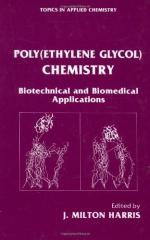|
This section contains 686 words (approx. 3 pages at 300 words per page) |

|
A glycol is an aliphatic organic compound in which two hydroxyl (OH) groups are present. The most important glycols are those in which the hydroxyl groups are attached to adjacent carbon atoms, and the term glycol is often interpreted as applying only to such compounds. The latter are also called vicinal diols, or 1,2-diols. Compounds in which two hydroxyl groups are attached to the same carbon atom (geminal diols) normally cannot be isolated.
The most useful glycol is ethylene glycol (IUPAC name: 1,2- ethanediol). Other industrially important glycols include propylene glycol (IUPAC name: 1,2-propanediol), diethylene glycol (IUPAC name: 3-oxa-1,5-pentanediol) and tetramethylene glycol (IUPAC name: 1,4-butanediol).
The common glycols are colorless liquids with specific gravities greater than that of water. The presence of two hydroxyl groups permits the formation of hydrogen with water, thereby favoring miscibility with the latter. Each of the glycols shown above is completely miscible...
|
This section contains 686 words (approx. 3 pages at 300 words per page) |

|


